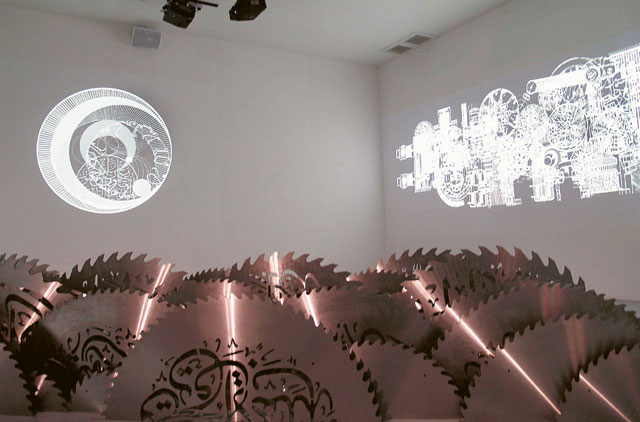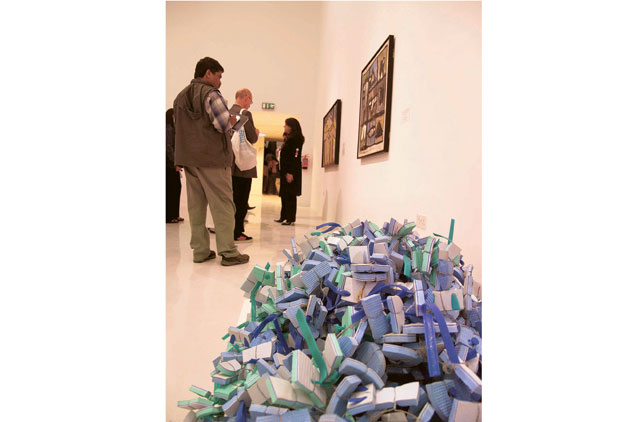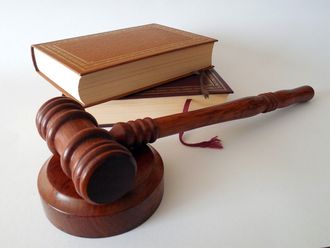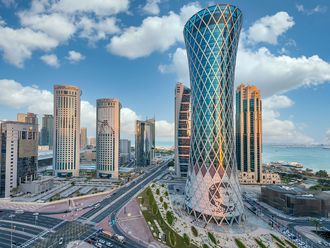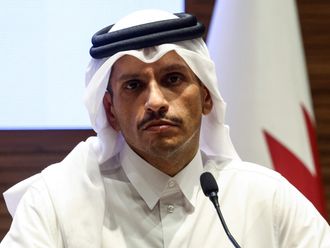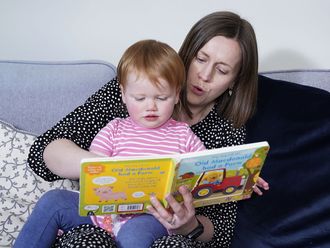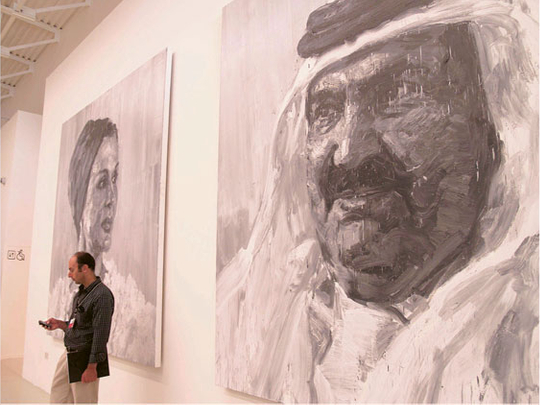
The Modern Art movement began in approximately 1880 and lasted till about 1970, until the present contemporary movement. "Arab modern art", therefore, denotes work during this period by Arab artists.
Definitions are something very important to the curators at Mathaf: Arab Museum of Modern Art, which presented three exhibitions to the public at its opening on December 30.
Sajjil: A Century of Modern Art (sajjil means the act of recording) showcases some 270 works of the collection's 6,000, spanning the decades from the 1840s to the present day.
Shaikh Hassan Bin Mohammad Bin Ali Al Thani has been collecting these artworks for the past 25 years and has now made them available to the public.
Sajjil is slated as "rethinking the position of Arab artists towards Modernism and within the Modernist movement".
This positioning attempts to step away from the popular narrative of Arab modern art, which does not accept the classification without a comparison to European modern art as its source and origin, according to the curators.
Arab contribution
"What we're trying to do with Sajjil is create a space for Arab artists within the context of what was happening in the West without trying to say that this is an alternative modernity. What we're trying to say is that these artists were engaged with the Modern Art movement that was happening in the West.
"A lot of the artists in the collection studied in Paris, Rome and Spain, so they were engaged with what was happening in the West and these are their contributions to the movement," said Wassan Al Khudhairi, acting director and chief curator, to Weekend Review.
"I think what we're trying to do is say that Arab artists, like artists from the rest of the world, were engaged in a period of time, in an art movement. Instead of trying to say that they were doing something in response to the West or separate from the West," she said.
The title "Sajjil" is taken from Mahmoud Darwish's poem Sajjil Ana Arabi (translated as "Record! I am an Arab"; published in English under the title "Identity Card").
According to Dr Nada Shabout, guest curator, Arab modern art has been explained in relation to "European imperialism and Orientalism" while acknowledgement of the existence of Arab modern art has been predicated on a "sudden rupture in the region's history through colonialism and submission to ‘superior powers'".
Nada is at present associate professor of art history and director of the Contemporary Arab and Muslim Cultural Studies Institute at the University of North Texas.
"This unequal and condescending relationship, as typified by Orientalism, argues that the West became obsessed with the ‘timelessness' and ‘backwardness' of the East as the exotic Other, which presupposed that Arabs were in awe of the progressiveness of the ‘superior civilisation', thereby designating the West as leaders and the Arabs as perpetual followers and imitators. Even though this was perhaps the case at some point, surely it was bound to end in the long run," Nada writes in the introduction to Sajjil.
Mathaf has, therefore, carved out a specific position for itself in Doha: On the one hand it presents a literal place for a rare collection of thousands of Arab Modern artworks (collecting Arab art either regionally or internationally has not been a tradition in the past) and on the other, it is a place for Arab Modern art to stand aside — and alone — from its Western counterparts.
Art critics noted a number of similarities in the Sajjil works to Western modern artists such as Pablo Picasso, Claude Monet and Henri Matisse.
"… when you see the works, you see there are works from different periods that are commonly known in Western art as Cubism, Surrealism, etc, because they [the Arab artists] were engaged there. We have artists who worked in the studios of Picasso, we have artists who knew Monet; so there are influences and interactions between artists: You can't really define how someone is influenced. You meet someone and without knowing it, subconsciously, you're influenced," Wassan said.
Comparison to other collections of Arab Modern art have been impossible, the curators write, because, as mentioned before, it was not a tradition to collect this genre of work.
Mathaf opened with three exhibitions — all three are now in temporary accommodation till a suitable permanent venue is decided upon. Sajjil is based in the main Mathaf building, a converted school in Doha's Education City, while Interventions and Told. Untold. Retold are being shown in the grounds of the Museum of Islamic Art.
Interventions is an exhibition dedicated to five regional artists who have made significant contributions to both the Modern Art movement in the region and their respective countries.
It contains pieces from the Mathaf's main collection representing the Modern era and also commissioned pieces representing the contemporary era.
"Interventions showcases the works of five artists who bridge the gap between modern and contemporary … [it] is about trying to create a place to discuss this grey area between the modern and the contemporary and know how to draw that line," Wassan said.
Dia Azzawi was born in 1939 in Baghdad, Iraq, and now works in London. Since his work in the United Kingdom in the 1980s as director of the Iraqi Cultural Centre in London, Azzawi witnessed the absence of Iraqi art from the contemporary art scene. Since then, he has dedicated himself to the promotion of Iraqi art and artists.
His commissioned piece, Wounded Soul, A Journey of Destruction, represents destruction in and around his homeland (post-2003); resin roses that lay like a carpet on the ground around his installation represent the increasing number of academics killed (according to the Brussels Tribunal).
Fareed Belkahia still lives in his native Marrakesh, Morocco, where he was born in 1934. Curators write of Belkahia that he is "a daring man, whose continuous love of experimentation and discovery led him to forge an even stronger relationship with his homeland".
He experiments with traditional materials, such as copper, raw hide and parchment and has exhibited in his home country, regionally and in Europe.
Nada writes in the introduction to Interventions that "an underlying theme in the work of the five artists is their occupation with human suffering and preservation of humanity". To their age, she continues, Arabism was an important factor in the maturity of modern Arab art.
Ahmad Nawar has been compared to a surgeon because of his precision and dexterity. Born in 1945 in Gharbiya, Egypt, he now lives and works in Cairo as a "prolific artist, educator and a highly decorated public cultural figure".
He is at present head of the graphic department and teaches at the Faculty of Fine Arts in Cairo University.
Sudanese artist Ebrahim Al Salahi writes that in his work Behind the Mask 1, he wanted to "indicate the different ways that men, women, soldiers, politicians and people at large want to disguise themselves and their intentions through a cover, behind which they hide in whatever they do".
Born in Omdurman, Sudan, he now lives and works in Oxford, England, having held a number of cultural positions in London, Sudan, Somalia and Qatar.
Hassan Sharif needs no introduction to many in artistic circles within the UAE. Born in 1951 in Dubai, he still lives and works here. His Cow Belly is designed to evoke environmental and cultural concerns.
The inherent contradiction lies within the coldness and the rigidity of the aluminium typically used in construction and the softness of the animal's belly; at the same time, both of these indicate nurture and growth. Sharif studied in the UK, returned to Dubai in 1984 and founded the Emirates Fine Arts Society the same year. He also founded the Group of Five with other Emirati artists and the Art Atelier in the Youth Theatre and Arts in 1987.
While the artists were commissioned to do one new work for the Interventions exhibitions, Nada said, several works from the permanent collection were used to "contextualise them in a sort of thematic retrospect", she said.
"Each of the artists was instrumental in introducing modern art in each of their respective countries but, together, were also instrumental in forging what we are calling now Arab modern art," she continued, adding that they were also specifically chosen for their role in introducing art in education in their respective countries and influencing younger generations.
"And in many ways, they are still influencing the younger generations," she said. According to the curator, Interventions starts a dialogue between Sajjil and the third exhibition completely commissioned for the opening of Mathaf, Told. Untold. Retold.
Told. Untold. Retold takes 23 contemporary artists (with roots in the Arab world) on a "journey through time and space". The pieces shown in the exhibition were specially commissioned for the opening of Mathaf, with reportedly high budgets.
It has been curated by Sam Bardaouil and Till Fellrath, who co-founded Art Reoriented (a "curatorial platform focusing on contemporary art from the Middle East").
Spreading love
Ghada Amer was born in 1963 in Cairo and now lives and works in New York. Her painted, cast resin sculpture, One Hundred Words of Love, is one of the first pieces to greet art lovers at the commissioned exhibition. In the Arabic language, there are more than 100 synonyms for the word "love" — ishq, hub and gharaam are just three of these.
"Nowadays, it's [Arab world] associated in the Western culture with violence, terrorism — it's extremely negative. So I decided to go with something extremely positive … which it [love] is in the Arab world; songs and everything are about love," Amer told Weekend Review at the exhibition. She continued that the public doesn't really know her work as a sculptor, as she usually does paintings.
Lights shine into the hollow resin shell, casting the words of love on to the walls. As visitors pass around the piece, they are covered in love.
"I think Qatar — and the rest of the region — is interested in developing an art scene, in making a place for artists from the Arab world. So every type of institution has a role, and it contributes, it's an ecology. We need museums, we need galleries, we need auction houses, we need all these things, to have a vibrant, cultural life," Wassan said of the Mathaf opening.
Exhibitions at the two Mathaf locations will run until May 28, apart from Sajjil (closing date is yet to be announced).



